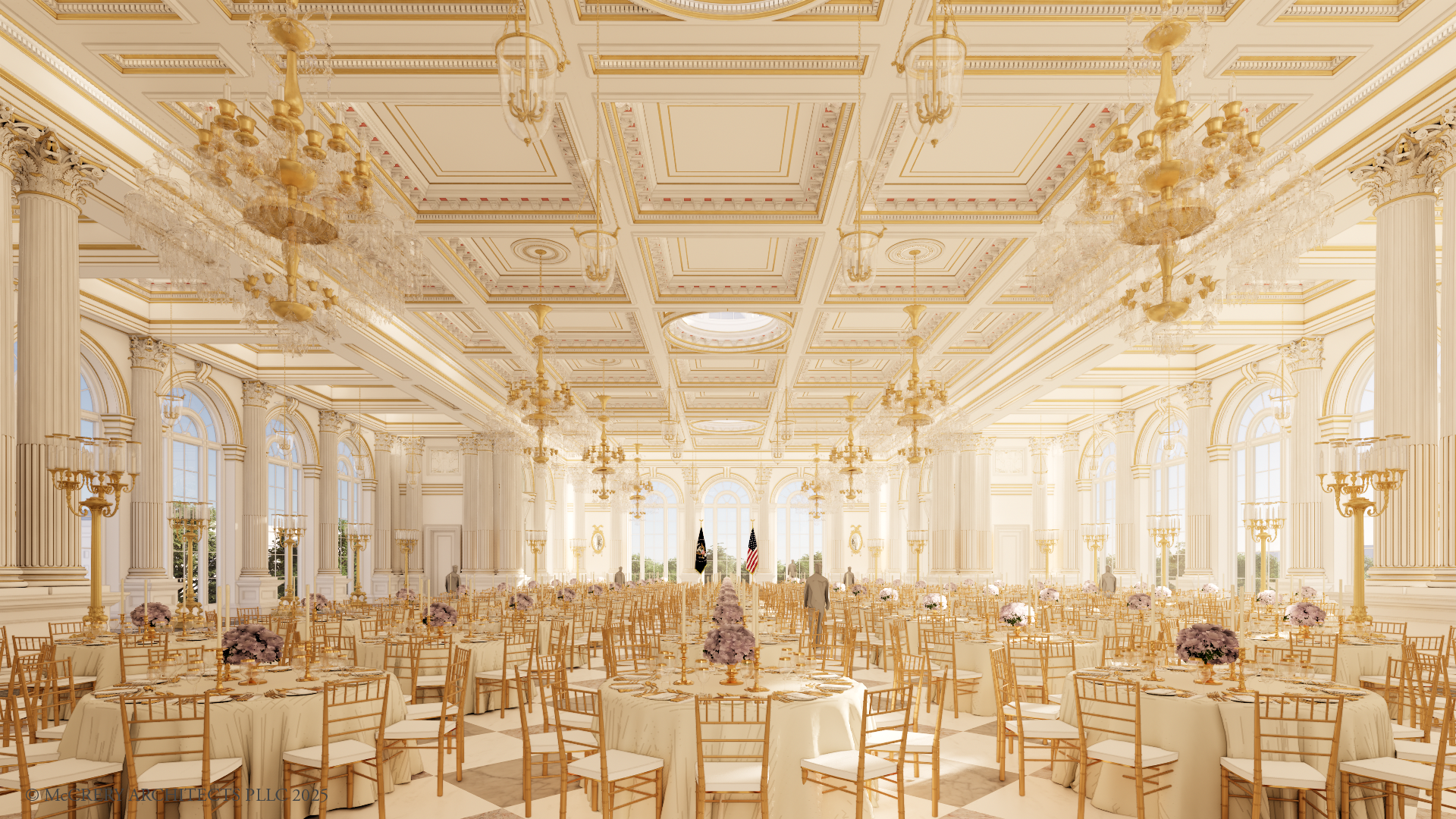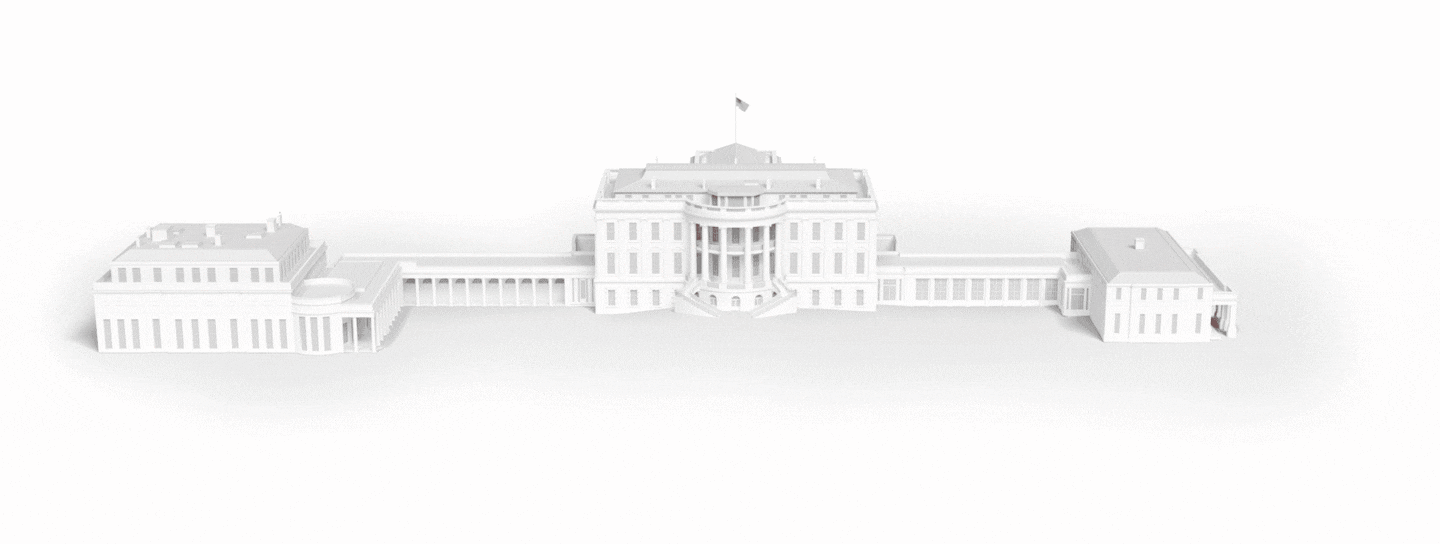Fast, private email that's just for you. Try Fastmail free for up to 30 days.
Trump’s ‘Ballroom’
Last week, Elisabeth Bumiller at The New York Times penned an extraordinary obituary:
The East Wing, the entrance to the White House for millions of Americans on official tours, the site of offices for every first lady for nearly a half century and the home of calligraphers who prepared thousands of invitations for White House state dinners, disappeared into a pile of rubble on Thursday. It had stood for 123 years.
I, like many Americans, was dumbstruck by the unexpected destruction of the White House East Wing. It felt like a ham-fisted, punch-in-the-mouth metaphor for Donald Trump’s dismantling of America’s democracy—another jackhammering from an aging “master builder” toying with his tools, violently ramming them into places without permission—a B-plot pitched by a first-year television writer, only to be gently chided for its artlessness by the more experienced staff.
Which doesn’t make the metaphor any less apt.
Adam Gopnik explains our collective distress in The New Yorker (Apple News+):
The surprise and shock that so many people have registered at the photographs of Donald Trump’s destruction of the East Wing of the White House—soon to be replaced by his own ostentatious and overscaled ballroom—is itself, in a way, surprising and shocking. On the long list of Trumpian depredations, the rushed demolition might seem a relatively minor offense. After months marked by corruption, violence, and the open perversion of law, to gasp in outrage at the loss of a few tons of masonry and mortar might seem oddly misjudged.
And yet it isn’t. […]
The act of destruction is precisely the point: a kind of performance piece meant to display Trump’s arbitrary power over the Presidency, including its physical seat. He asks permission of no one, destroys what he wants, when he wants.
Trump unceremoniously tore down this historic building—no review, approvals, or consideration for its history, all in service to his inflated ego. The sheer audacity, the unmitigated gall, the utter move-fast-and-break-things of it is an affront to every American.
In July, when plans for the proposed ballroom were first announced, Zolan Kanno-Youngs at The New York Times quoted White House press secretary Karoline Leavitt as saying:
[…] the ballroom would be built where the “East Wing currently sits.” When asked whether the project required tearing down that section of the White House for the new ballroom, she said the East Wing would be “modernized.”
Donald Trump himself said “It won’t interfere with the current building. It’ll be near it but not touching it.” (Video, starting at 21:47.)
That promise didn’t last long.
Kanno-Youngs also reported that the proposed ballroom appears “to resemble one of the rooms in Mar-a-Lago, […] lined with golden chandeliers and golden chairs surrounding dozens of tables.” Trump is certainly consistent in his (lack of) taste.

That Times piece also quotes presidential historian Douglas Brinkley on Trump’s supposed motivation for building the ballroom:
He’s been wanting to be seen as the builder president so that whoever in the future goes to the White House, they’ll be in the Trump auditorium.
Which, as suppositions go, is quite plausible: with or without his name emblazoned on it, Trump knows it will always be associated with him, even derisively. Whether it’s “Trump’s Ballroom” or “Trump’s Folly,” he won’t care as long as his name is mentioned. A narcissistic monument to a monumental narcissist.
I appreciate and respect the history of the East Wing as the public entrance to the White House and the traditional headquarters of the First Lady—the heart of the nation—but I don’t have any particular affinity for the building itself. The loss I feel over its destruction is less about the structure and more about the history, the process, what it’s being replaced with, and what that represents.
Is a grand national ballroom needed to entertain visiting dignitaries during state dinners? I don’t know. Maybe? Would a permanent space be better than temporary tents? Perhaps. Previous presidents didn’t seem to consider it a pressing need, and I don’t recall any discussions about it until Trump announced his intent to build one—though apparently he’s been clamoring for one for years.
The New Yorker’s Gopnik again, on previous White House construction:
Earlier alterations were made incrementally, and only after much deliberation. When Harry Truman added a not very grand balcony to the Executive Residence, the move was controversial, but the construction was overseen by a bipartisan commission. By contrast, the new project—bankrolled by Big Tech firms and crypto moguls—is one of excess and self-advertisement. The difference between the Truman balcony and the Trump ballroom is all the difference in the world. It is a difference of process and procedure—two words so essential to the rule of law and equality, yet doomed always to seem feeble beside the orgiastic showcase of power.
That is the rhetorical fragility of liberal democracy: its reliance on rules rather than on rage. If the White House must be remade, let there be a plan; let it be debated; let the financing be transparent and free of kickbacks and corruption. It isn’t complicated, and it’s the very principle at the heart of the American Revolution: following rules is not weakness. It is the breaking of them that is the indulgence of insecure tyrants, who feel most alive in acts of real and symbolic violence.
Had a plan for a stately and decorous ballroom been proposed, studied, and approved—even one that necessitated the eventual teardown of the East Wing—I might be more sympathetic to even fatuous arguments in its favor, and my objections less strident.
Even then, a ballroom of this size seems overly grandiose, and gives me pause. President Reagan held 59 state dinners during his two terms, the most of any president. President Obama held 13. Trump has held two. Why is such a large, opulent space needed for so few events? It’s also at odds with the relative modesty of “The People’s House.” It’s certainly way out of scale. The now-destroyed East Wing was 12,000 square feet. Its replacement is a planned 90,000 square feet, 7.5 times larger, and nearly double the 55,000 square feet of the White House itself. Why does an ancillary space, used maybe four to six times a year, need to be so massive and ostentatious?
The Washington Post performed “an analysis of architectural renderings, photos and satellite imagery” from which they “reconstructed an estimate of the overall footprint of the new East Wing.” Those renderings make tangible just how absurdly outsized the East Wing and ballroom would be.

Those renderings reminded me of the palaces of Putin, Hussein, Erdoğan, and the very monarchies we shrugged off 250 years ago.
I’m left with the uneasy sense that that’s the point—or at least a point—of this entire endeavor: for the building—both the act and the result—to embody the aesthetics, trappings, and power of dictators and autocrats. Trump demolished the East Wing to build a massive monument to himself: a self-important, would-be king and dictator. The grotesque scale of the building suggests that it’s more than just a presidential ballroom.
The renderings also brought to mind—quite uncomfortably—another set of buildings: the mausoleums of China, in particular that of Chairman Mao Zedong, who is embalmed and entombed within, for visitors to pay their eternal respects.
It’s a disturbing yet conceivable possibility that what Trump may be building is not just a grand ballroom but also a future pilgrimage site for his MAGA faithful—his own sepulcher.

